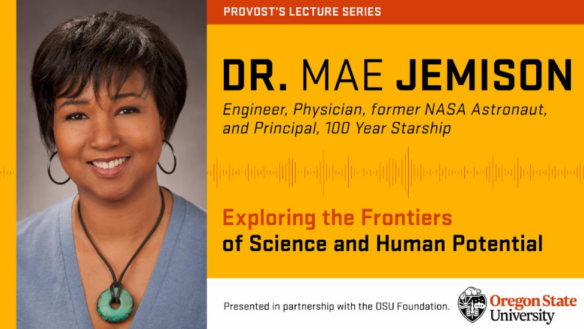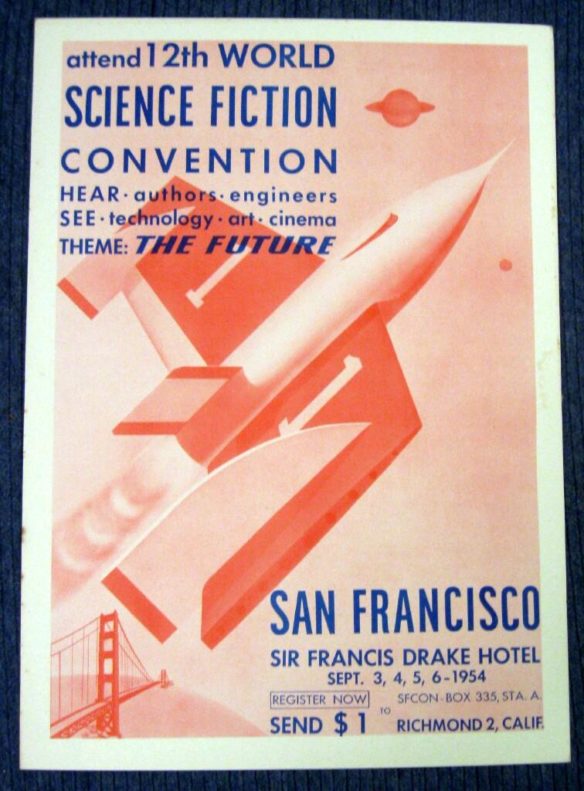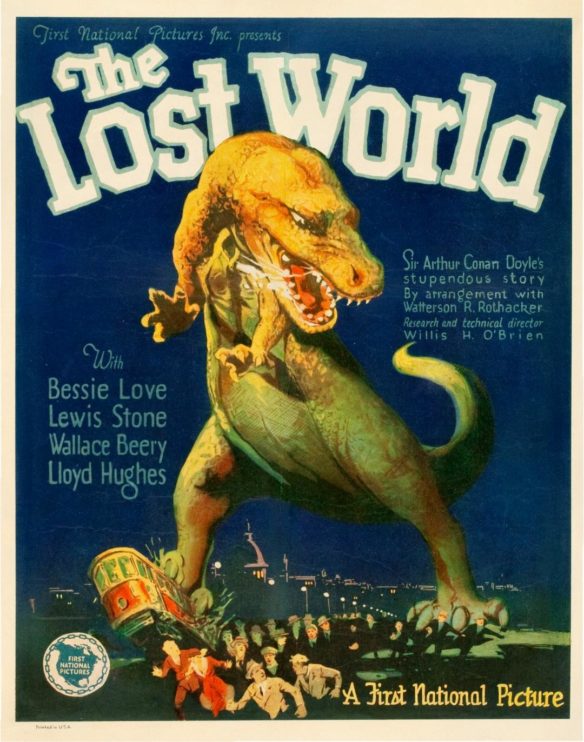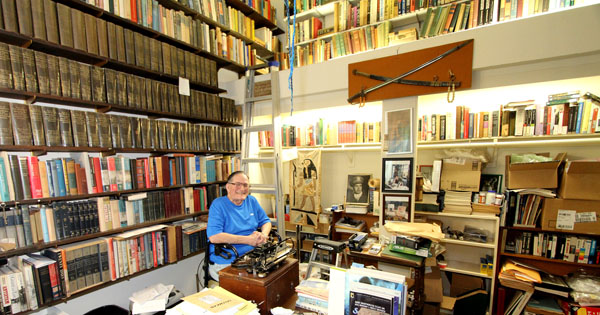(1) ABOUT THE NEW COMICS AND POETRY NEBULA AWARDS. “SFWA Presents: Get to Know…Our New Comics and Poetry Nebula Awards” is a conversation with SFWA’S Comics Committee lead Jessica Maison, and Holly Lyn Walrath, and Wendy Van Camp representing SFWA’s Poetry Committee.
In November 2024, SFWA announced the launch of two new Nebula Awards, one for speculative poetry and one for speculative comics. Eligibility for these awards began in January 2025, with the first awards for these new categories to be presented at the 2026 Nebula Awards Ceremony….
Let’s start with the big question:
Why a poetry award, and why a comics award? What traditions and recent trends in SFF are these new prizes celebrating?
Holly Lyn Walrath: I would say that there is a thriving sub-pocket of speculative poetry alive and well today. Similar to the larger SFF community, speculative poetry often does not get the recognition we might wish for in realist or “literary” circles, yet many authors who got their start in, say, an MFA end up publishing speculative poetry, and many realist/literary magazines publish speculative poetry. Speculative poetry is also a central part of the history of SFF. The earliest pulp magazines published poetry—for example, Weird Tales. There is a rich, unexplored past in speculative poetry that most writers are not familiar with, so it’s exciting to see a resurgence in the genre.
Wendy Van Camp: Genre poetry has come a long way. It used to be nearly invisible. As a poet, you’d often have to explain and defend the idea of writing poetry with science fiction or fantasy themes. Now, it has a place at major conventions worldwide. Like filk singers and genre artists, speculative poets have found a welcoming community. This poetry is not only for our fans, but traditional poets are noticing the growing opportunities. Paying markets, an award system for both books and single poems, and recognition as creators are all attractive. Literary poets realize there is a community for their ideas about technology, science, and concepts of the future.
Jessica Maison: Looking back to the first pulp magazines like Amazing Stories, a clear intersection between speculative fiction and comics emerges. Many of the pulps and comics were being published by the same larger publishers and even had some of the same heroes and stories overlap. What the pulps and comics share—besides the serial format—is that there was freedom to push boundaries and the limits of genre. That freedom has expanded tenfold in modern speculative comics, especially from its current independent creators and publishers. Whether a writer and illustrator are adapting and reinterpreting beloved characters from a favorite speculative novel like Frankenstein, or, on the flip side, a writer is adapting a story from a comic for the screen, comics weaves into traditional and emerging SFF industry in ways that push the boundaries of speculative fiction from within its structured panels. Honestly, I’m just excited to be part of it all and to introduce my favorites to as many people as possible.
(2) DETECTING ONE’S OWN BIASES. Herb Kauderer’s “Award Season: Show Me Your Bias” at SPECPO is an essay on speculative poetry awards that has application to many sff award voters.
… In recent times the Science Fiction & Fantasy Poetry Association (SFPA) has made some changes to their award processes to reduce inappropriate bias. Notably, it is no longer legal for a member to nominate a work for the Rhysling if it is written by a close family member. This certainly makes sense to me. I have a large family that could easily flood nominations should they, or I, think that a good idea. That would be an unfair advantage assuming they are biased toward my work. At least, I hope they would be biased in favor of my work. My family is always surprising.
Another point of discussion is whether members should share all their eligible poetry. The SFPA facilitates members making their eligible poetry available to each other. Since the membership nominates and votes on the awards, this does cause some preference to members. Yet, in my experience members also recommend to each other poetry outside SFPA’s member packets, because we are happy to nominate and give awards to non-members’ poetry if it moves us. F.J. Bergmann has convinced me to be generous in what I share in Rhysling packets even though some members feel flooded by them. Yet I appreciate David C. Kopaska-Merkel’s caveat that I can exclude anything that I am uncomfortable seeing nominated. I may not know what others find to be my best poems, but I definitely know what I’m comfortable allowing to represent my best work….
(3) HARLEY QUINN CO-CREATOR DEAN LOREY REVEALS WHY TO WATCH DC’S UNHINGED ANIMATED HIT. [Based on a press release.] JustWatch spoke to hit showrunner, producer, and writer Dean Lorey about his must watch list of movies and TV shows. Check out his take on different versions of Harley Quinn, James Gunn’s Creature Commandos and more.
Harley Quinn Co-Creator Dean Lorey Reveals Why to Watch DC’s Unhinged Animated Hit
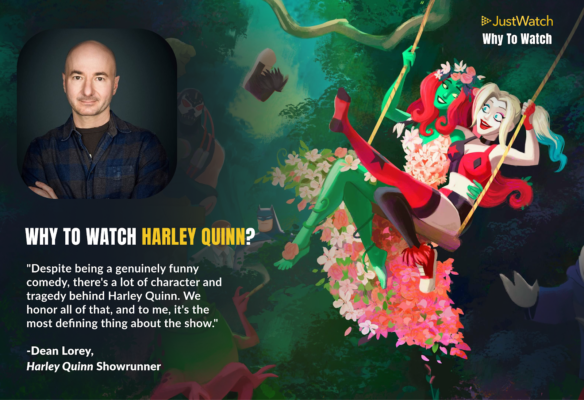
Dean Lorey, Showrunner
Even though it’s a comedy, we write Harley Quinn like a drama, and we take the characters very seriously. We cry when they die, and we cheer them on when they do something funny. So the secret sauce of the show is that despite being a genuinely funny comedy, there’s a lot of character and tragedy behind it. We honor all of that, and to me, it’s the most defining thing about the show. It’s not how R-rated it is (although that’s obviously very important). It’s that we take the world seriously while also delivering on the raunchiness and absurdity it’s known for.
Harley Quinn Showrunner Dean Lorey Names His 3 Other Favorite On-Screen Harleys
- Batman The Animated Series is where Harley Quinn was created, it’s where we first met her. And she just sort of explodes from the word Go! That planted the direction at the core of the character. She is chaotic and she enjoys it. I always loved that.
- Margot Robbie‘s first appearance as Harley [in Suicide Squad] was transformative. I loved her take on it.
- I loved Harley Quinn in the Arkham video game. There’s something about playing the character that makes you feel it a little bit more.
- Explore Dean Lorey’s Picks Now at JustWatch.
About Dean Lorey: Whether he’s writing, producing or showrunning, Dean Lorey is responsible for creating and developing some of your favorite tv shows and movies, from cult classics to smash hits. Starting his career writing screenplays for films like My Boyfriend’s Back and Jason Goes to Hell: The Final Friday, as well as comedies like Major Payne, Dean got arguably his biggest break writing on the landmark series Arrested Development. He’s since worked to bring some of the quirkiest comic book stories to life on projects like Powerless and iZombie. His recent notable accolades include co-creating breakout hits Harley Quinn (the animated series) and Kite-Man: Hell Yeah!, and showrunning James Gunn’s Creature Commandos.
(4) IMAGINING THE UNIVERSE. Michael Everett’s introduction to “National Geographic Picture Atlas of Our Universe” at Michael Whelan’s Substack newsletter begins:
Published in 1980, National Geographic Picture Atlas of Our Universe was among the most successful projects Michael has been involved with. He didn’t provide the cover—that was the stellar John Berkey—but Michael’s work on the interiors is still widely regarded today.
A massive initial print run of 670,000 copies pushed the first edition into stores everywhere where this coffee table book flourished for more than two decades in print. With revisions in 1986 and 1994, the book sold a staggering 2.5 million copies….
Then Whelan takes over —
What if…there really were creatures on other planets?
Our Universe was a fun assignment, and I’m glad so many people enjoyed the work I did for that project. Someone once asked what my favorite piece from the book was, and that’s hard to pin down. I will say that I had the most fun working on the silly alien creatures the editors came up with.
That section was written by the National Geographic editorial department. They asked me to illustrate their rather whimsical inventions, so I did these little paintings (about the size of my normal concept work) to accompany the text.
Among those, the Jupiter and Venus critters were probably my faves.

(5) SFCON ’54 ETC. Heritage Auctions has a Twelfth World Science Fiction Convention Poster and Frank R. Paul obituary clippings on the block. Here’s their description of the lot. (Its date range should be 1954-1963 since the Paul clipping shows that’s the year of his death.)
Twelfth World Science Fiction Convention Poster and Frank R. Paul Newspaper Article and Obituaries Group (Various Publishers, 1954-57). A very interesting lot for pulp collectors! Offered here is a 10″ x 14″ cardboard poster for the 12th World Science Fiction Convention in San Francisco, California. Held at the historic Sir Francis Drake Hotel on Union Square from September 3rd through 6th, 1954. Attendance was approximately 700, and among the first attendees was Philip K. Dick, with the Guest of Honor being John W. Campbell, Jr. The poster is printed in red and dark blue and is in Fine condition, with only very slight soiling and handling wear. Also included is an article about Frank R. Paul, “The Dean of Science Fiction Illustrators”, and several examples of his obituary from July of 1963. The newspaper clippings are in Very Good condition, with moderate tanning.
From the Roger Hill Collection.

(6) DON’T MISS OUT. First Fandom Experience “Announces the Supplement to Volume Three of The Visual History”.
Early fans wrote and published prolifically. In The Visual History of Science Fiction Fandom, we excerpt and distill their work to focus on the most important, interesting and entertaining material they created. Even so, each volume has filled over 500 pages. If you’ve carried one around, you know the meaning of the term “weighty tome.”
Still, we’re frustrated by the exclusion of the full versions of key fan artifacts that provide additional richness and context. This leads to today’s announcement:
The Supplement to The Visual History of Science Fiction Fandom, Volume Three: 1941 is now available. The Supplement includes 168 pages of material created by fans in 1941, with full narratives presented as originally published in seldom-seen fanzines.
Supplements for Volumes One and Two are forthcoming.
(7) WHY NOT SAY WHAT HAPPENED? Scott Edelman tells listeners to episode 19 of his Why Not Say What Happened? podcast “What Gerry Conway Wasn’t Allowed to Say About Gwen Stacy in F.O.O.M.”
While shredding another old notebook from my early comics career, I reminisce about the many wretched one-act plays I created while being taught by famed playwright Jack Gelber, the lie I told Marv Wolfman and Len Wein which got me hired at Marvel, the most wrongheaded conclusion Fredric Wertham reached in Seduction of the Innocent, my plot for an Inhumans strip starring Karnak which had no reason to exist, the most ridiculous method any writer ever conceived of for killing a vampire, what Gerry Conway said about Gwen Stacy which was censored out of his F.O.O.M. interview, the first words to reach readers about my Scarecrow character, and much more.
This link will show you where it can be found on a dozen other platforms.
(8) SOUNDS THAT NOBODY EVER HEARD BEFORE. “’We’re projecting into the future’: sounds of BBC Radiophonic Workshop made available for public use” reports the Guardian.

With its banks of bafflingly complex equipment, and staff members that were among the most progressive musical minds in the UK, the BBC Radiophonic Workshop was a laboratory of 20th-century sound that produced endless futuristic effects for use in TV and radio – most memorably, the ghostly wail of the Doctor Who theme.
Now, the Workshop’s considerable archive of equipment is being recreated in new software, allowing anyone to evoke the same array of analogue sound that its pioneering engineers once did….
… The Workshop may be best known for the Doctor Who theme, but it also created music and sound effects for other sci-fi shows such as Quatermass and the Pit, Blake’s 7 and The Hitchhiker’s Guide to the Galaxy. Other cornerstone BBC shows such as Blue Peter and Tomorrow’s World were also beneficiaries of the Workshop’s creativity.
The Workshop was originally created in 1958, tasked with adding an extra dimension to plays and other shows on Radio 3. Co-founders Daphne Oram and Desmond Briscoe were brilliant and high-minded, inspired by musique concrète – the style that asserted that raw, tape-recorded sound could be a kind of music. Before long a highly experimental, even fantastical means of composition was afoot, with lampshades being bashed to produce percussion, and long tape loops being carried along BBC corridors…
… The newly available software will cost £149, and is available from 19 February, though it will have an introductory price of £119 until 17 March.
(9) MEMORY LANE.
[Written by Cat Eldridge.]
February 19, 1960 – The Twlight Zone episode “Elegy”
The time is the day after tomorrow. The place: a far corner of the universe. A cast of characters: three men lost amongst the stars. Three men sharing the common urgency of all men lost. They’re looking for home. And in a moment, they’ll find home; not a home that is a place to be seen, but a strange unexplainable experience to be felt. — opening narration
On this date sixty-five years ago, Twilight Zone’s “Elegy” aired for this first time. It was the twentieth episode of the first season and was written by Charles Beaumont who you might recognize as the screenwriter of 7 Faces of Dr. Lao. Beaumont would die at just 38 of unknown causes that were assumed to be neurological in nature.
The cast for this SF Twilight Zone episode was Cecil Kellaway as Jeremy Wickwire, Jeff Morrow as Kurt Meyers, Kevin Hagen as Captain James Webber and Don Dubbins as Peter Kirby. These are not the names in the short story it come from in that, the caretaker of the cemetery and the most logical crewman are named Mr. Greypoole and Mr. Friden respectively. In the Twilight Zone script, their names are Jeremy Wickwire and Professor Kurt Meyers.
This episode was based on Beaumont’s short story “Elegy” published in Science Fiction Quarterly, May 1954. It’s available for Subterranean Press on their website as an epub in The Carnival and Other Stories for just $6.99.

(10) COMICS SECTION.
- Bizarro has a knotty trick.
- The Argyle Sweater reveals another Bat-signal.
- Wannabe meets a frustrating writer.
- WaynoVision has an easy guess.
- xkcd explains how KM3NeT works; with a stinger.
(11) URSA MAJOR AWARDS NOMINATIONS OPEN. The public is invited to submit Ursa Major Awards nominations through February 28.
More formally known as the Annual Anthropomorphic Literature and Arts Award, the Ursa Major Award is presented annually for excellence in the furry arts.
(12) PULL TO PUBLI$H. NPR heralds “Three Harry Potter fan fiction authors set to publish novels this summer”.
Fan fiction — the creation of unsanctioned, unofficially published, new works usually based on popular novels or films — was intentionally never mainstream.
There are the legal issues — copyright laws, intellectual property laws — of drawing from someone else’s creation, for one. Fan fiction authors also have historically considered their online arenas (Archive of Our Own, Fanfiction.net and others) more of a sandbox, a place to play with new ideas using characters and worlds people already know and love.
Take, for example, fan works imagining Harry Potter and friends in their 8th year at Hogwarts. Or pairing Draco Malfoy and Hermione Granger romantically — dubbed “Dramione” fan fiction.
But this summer and early fall will see the wide publication of three books by popular Dramione Harry Potter fan fiction authors: Rose in Chains by Julie Soto, Alchemised by SenLinYu and The Irresistible Urge to Fall for Your Enemy by Brigitte Knightley.
Soto’s romantic fantasy is a reworked version of her fan fiction The Auction, centered on a heroine who is sold to the highest bidder. SenLinYu’s debut fantasy about a woman with memory loss in a war-torn world is a revision of her popular Manacled. Brigitte Knightley’s debut novel, an enemies to lovers tale, is an original work….
….Most fan fiction authors don’t worry too much about how much of their work plays off a published author’s book or film because they are writing for personal fun, not for profit. Some works do get noticed by publishers who solicit these stories and help their authors rework them to distance them from their original: It’s called pull to publish.
Pull to publish isn’t a new concept, but writers and publishers say it’s a growing area. The idea of moving from fan fiction to traditional publishing used to be a virtual nonstarter, but stigmas around fan fiction are lifting.
“I know a fan fiction writer who pulled to publish in the early 2000s and then denied they’d ever written fan fiction,” said Stacey Lantagne, a copyright lawyer focusing on fan works and professor at Western New England University School of Law. “That was not a cool thing to say, not a cool thing to admit … so if you went looking for it, you’d have a really hard time identifying those authors because they just didn’t ever connect those two parts of their background.”
Lantagne says it appears that more fan fiction is being pulled to publish than a few years back, based on what she’s seeing in her work and because more people are talking about it openly, though it’s tough to track data on this area of publishing….
(13) LOOSER. “ChatGPT can now write erotica as OpenAI eases up on AI paternalism” says ArsTechnica. So do you feel better, or worse?
On Wednesday, OpenAI published the latest version of its “Model Spec,” a set of guidelines detailing how ChatGPT should behave and respond to user requests. The document reveals a notable shift in OpenAI’s content policies, particularly around “sensitive” content like erotica and gore—allowing this type of content to be generated without warnings in “appropriate contexts.”
The change in policy has been in the works since May 2024, when the original Model Spec document first mentioned that OpenAI was exploring “whether we can responsibly provide the ability to generate NSFW content in age-appropriate contexts through the API and ChatGPT.”
ChatGPT’s guidelines now state that that “erotica or gore” may now be generated, but only under specific circumstances. “The assistant should not generate erotica, depictions of illegal or non-consensual sexual activities, or extreme gore, except in scientific, historical, news, creative or other contexts where sensitive content is appropriate,” OpenAI writes. “This includes depictions in text, audio (e.g., erotic or violent visceral noises), or visual content.”…
(14) I TAKE IT BACK. [Item by SF Concatenation’s Jonathan Cowie.] The top universities in the world for retracting science are overwhelmingly Chinese says Nature.
A first-of-its-kind analysis by Nature reveals which institutions are retraction hotspots.
Though I’m always mindful of the former Astronomer Royal, Prof Sir Martin Rees saying better good SF than bad science…

[Thanks to Teddy Harvia, Mike Kennedy, Andrew Porter, Mark Roth-Whitworth, John King Tarpinian, Chris Barkley, Cat Eldridge, SF Concatenation’s Jonathan Cowie, Steven French, and Kathy Sullivan for some of these stories. Title credit belongs to File 770 contributing editor of the day Daniel Dern.]

